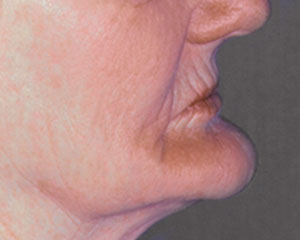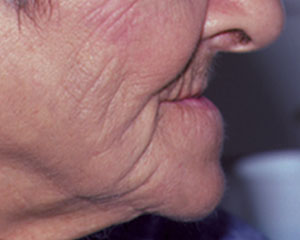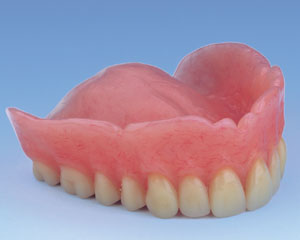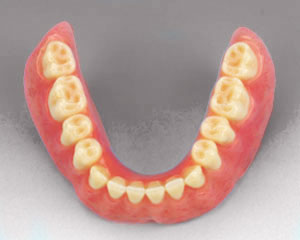Guide to Stabilizing Dentures
The information in the Guide to Stabilizing Dentures provides a comprehensive explanation of the consequences of missing teeth, a comparison of dental implants and dentures, and a detailed description of implant procedures. We encourage you to review all of the pages to help you make an informed decision about your treatment options.
Consequences of Complete Tooth Loss and Dentures
Millions of Americans suffer on a daily basis as a result of wearing dentures. Most of the problems with complete tooth loss and dentures are obvious, such as pain and improper fit and function, while others are less evident, including decreased self-confidence when eating, smiling, and laughing. Complete tooth loss is a major health problem, with all of the characteristics of a chronic disease, requiring strategies to manage the condition since there is no cure. In the past, the only option for people who were missing all of their teeth was dentures, providing some level of function, but focused primarily on replacing lost bone, gum tissue and teeth.
Studies indicate that more people are satisfied with their upper denture than their lower denture. In fact, about half of all people with lower dentures are not satisfied with the function or comfort of their denture. This is understandable since dentures actually accelerate bone resorption or deterioration by pressing down on tissues and compacting them. The dentures begin to feel loose as the bone melts away under them, but more importantly the bone resorption results in loss of jaw height and collapse of facial structures over time. The amount of bone loss in the lower jaw is about four times greater than in the upper jaw, causing changes in the fit of a lower denture much quicker than an upper denture, which also has the benefit of better retention because of the suction effect of the palate.
Some of the problems associated with complete tooth loss and wearing dentures include the following:
- The lower third of the face collapses over time as the bone melts away and muscles migrate, or pull back from their normal position.
- Wearing dentures accelerates the bone resorption.
- Dentures must be relined (made thicker) as the bone deteriorates and changes the fit of the dentures.
- Messy adhesives are often necessary to hold the dentures in place. Preliminary research indicates that those containing zinc could cause neurological problems if used excessively over time.
- Eating, smiling and laughing can become difficult when dentures do not fit securely, causing decreased self-confidence.
- The visible aging process is accelerated with a “witch’s beak” appearance resulting from the jaws deteriorating, as the chin juts out and up and appears too close to the nose.
- Wrinkles around the mouth increase dramatically and the lips lose support and appear to shrink as the mouth develops a flattened appearance.
- Nutritional and digestive problems often result due to the difficultly chewing and the inability to fully digest certain foods, such as fresh fruits and vegetables.
- Dentures can cause pain and sore spots on gums from rubbing on tender tissues.
- Bad breath results from the odors created by bacteria on the dentures.
The photos below illustrate the long-term impact of complete tooth loss and wearing dentures.

Facial structure collapse, shrinking lips, increased wrinkles; chin jutting up and out, appearing too close to the nose

Collapsed lower third of the face with
lost lip support, increased wrinkles
and folds around a flattened mouth

Upper denture with full palate covering
the roof of the mouth, which creates
a suction grip for better retention

The horseshoe shape of the lower
denture shows how little retention
there is compared to upper denture